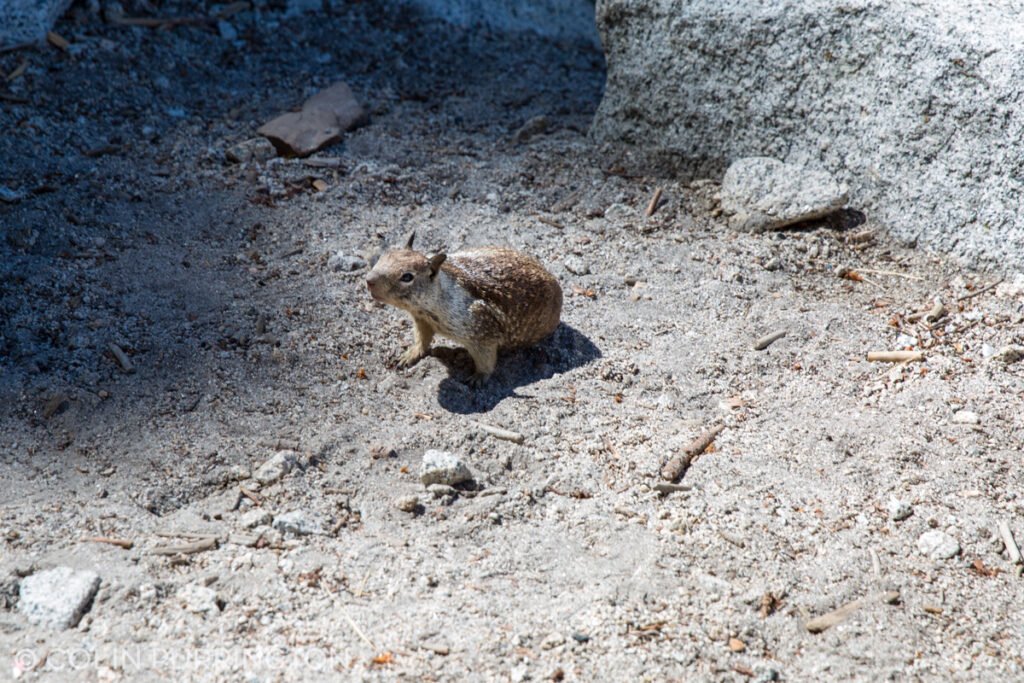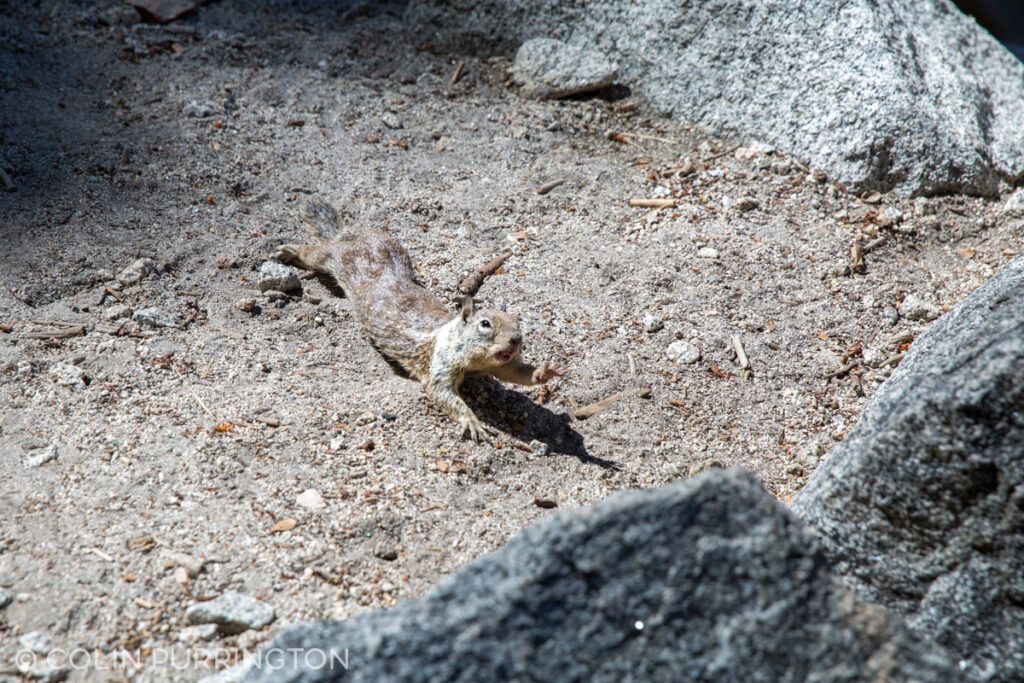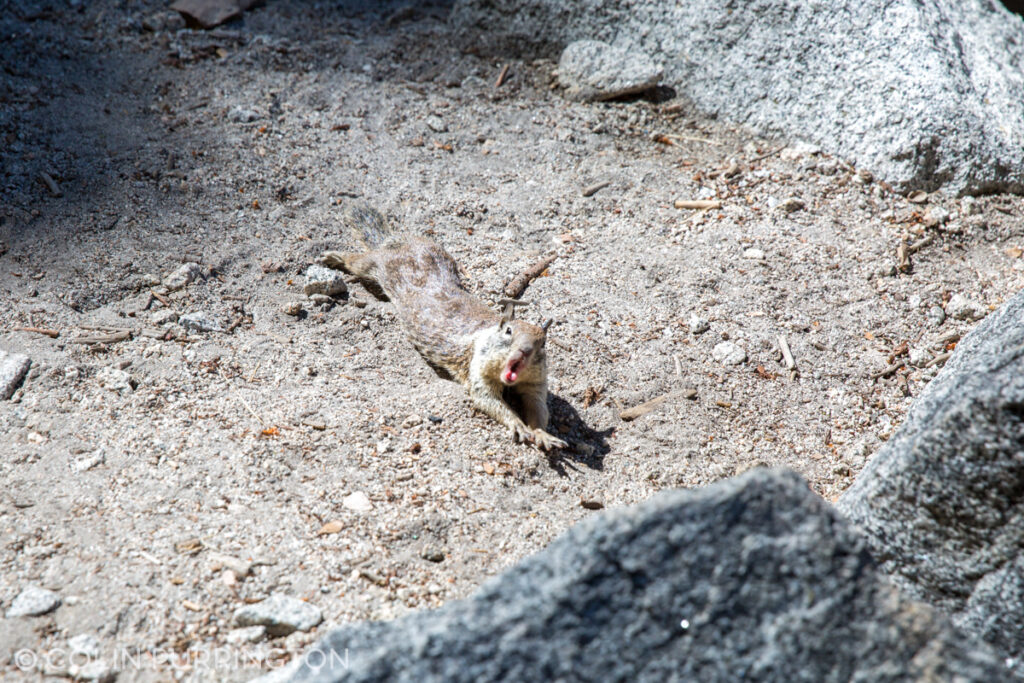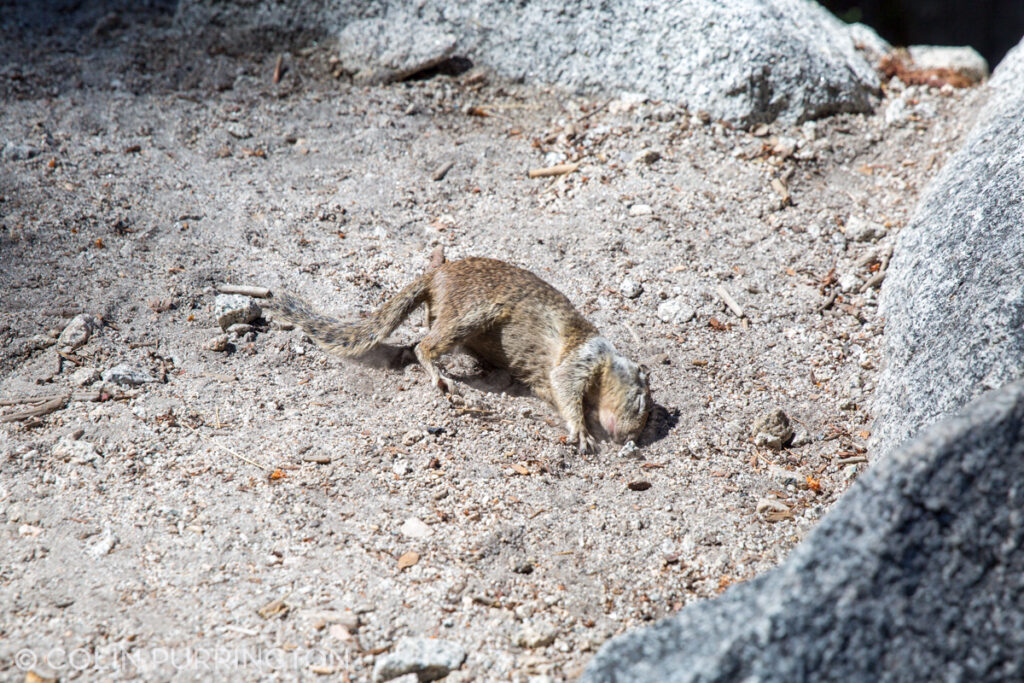Here are some photographs of an extremely talented California ground squirrel (Otospermophilus beecheyi) at Yosemite National Park. As the first photo shows, it’s totally fine. But then it launched into a “I’m dying and need food” routine that was first-rate, even including a part where it twitched, then feigned death. I’m posting in part in case others have seen similar behavior. Given how many people file through Yosemite, it’s also very likely that hundreds have captured videos of this exact squirrel. I’d love to see what else is in its repertoire. I think it was somewhere along the Nevada Fall trail.






